The many tablet-woven bands are a unique and little-known part of the rich Oseberg find. They have remained in a faded state in the storage rooms of the Viking Ship Museum in Oslo, until the author has literally brought them back into the light.
By Bente P. Skogsaas
Tablet weaving is an ancient textile craft that has been practiced in many other parts of the world before Norway. The first bands in Norway are found using the simplest technique from around 150 AD (like the edges in figure 1). They functioned as starting, selvage, and finishing edges for larger textiles on warp-weighted looms. Over time, the bands became so complex in pattern and technique that they were woven separately. Good examples are bands from the Migration Period (ca. 500–650 AD): From Evebø (figure 1) and Snartemo V (figure 2).
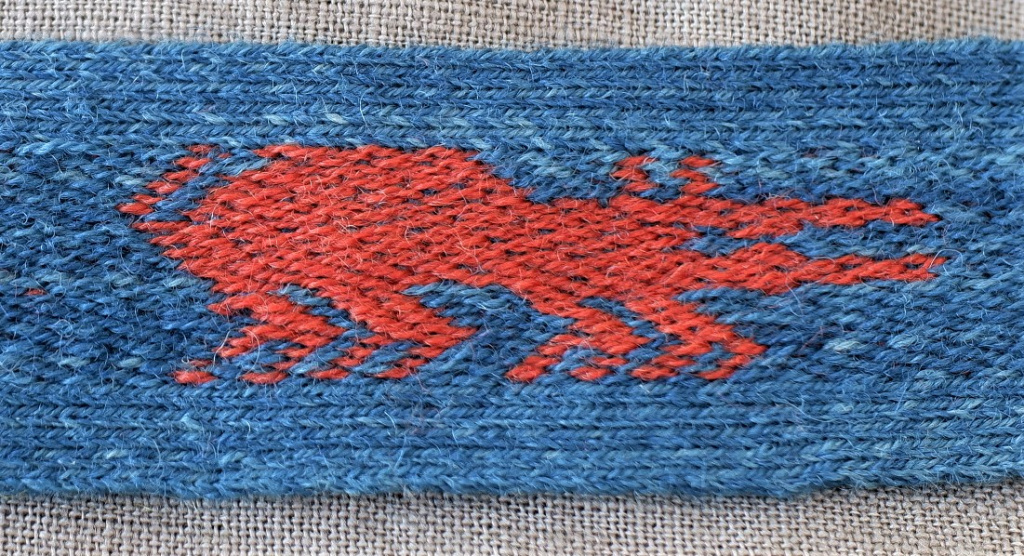
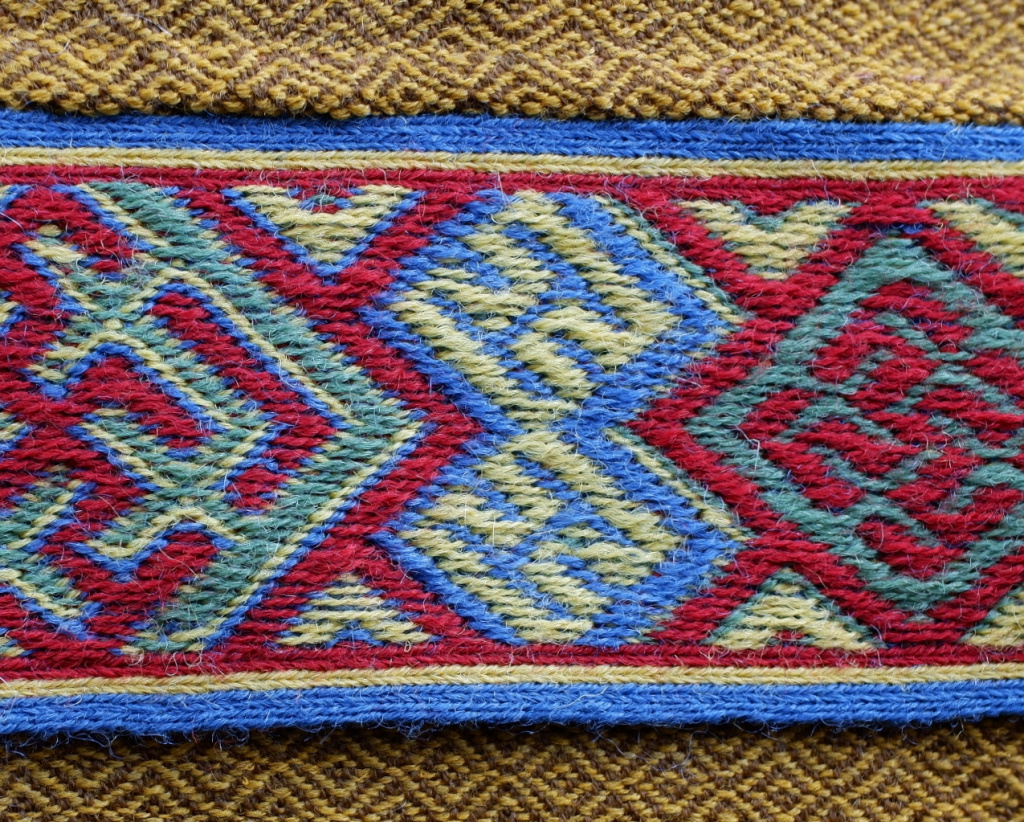
No finds have been made from the period between the Migration Period and the Vendel Period, before the very first from the Viking Age (793–1050 AD): the Kaupang band from 800 AD. The Kaupang band was found mounted at the top of a strap dress and is one of the very few Viking Age bands that has been proven to have been mounted on a garment (figure 3).
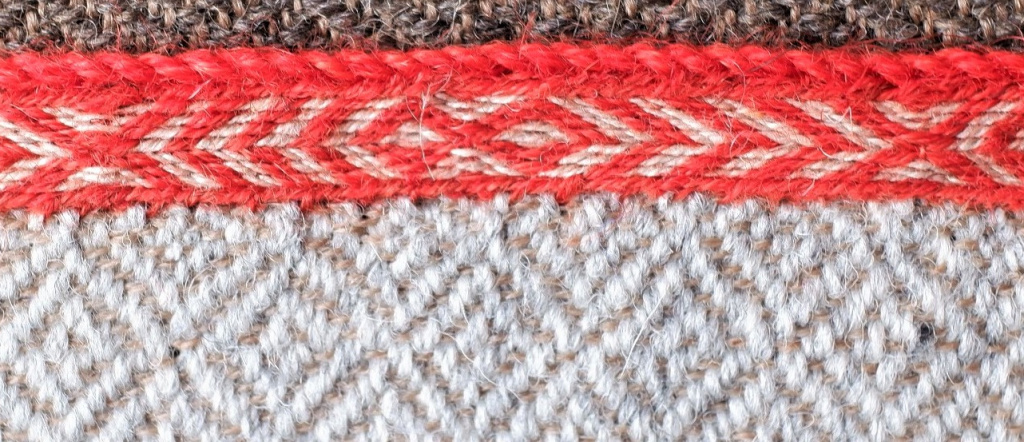
From the same time, just a few hours’ ride away on horseback, the most specialized and innovative weavers were based in Oseberg. The find from this weaving community, with approximately 60 tablet-weaving fragments cataloged under 48 numbers, was undoubtedly unparalleled both in its time and afterward: Unparalleled because it features so many advanced techniques, motifs, and yarn materials. No other Viking Age finds have surpassed this diverse collection. The excavation leader, Professor Gabriel Gustafsson, realized early on that the textile find was unique. At the entrance to the burial chamber lay a partially finished tablet-woven band threaded with 52 tablets (figure 4).
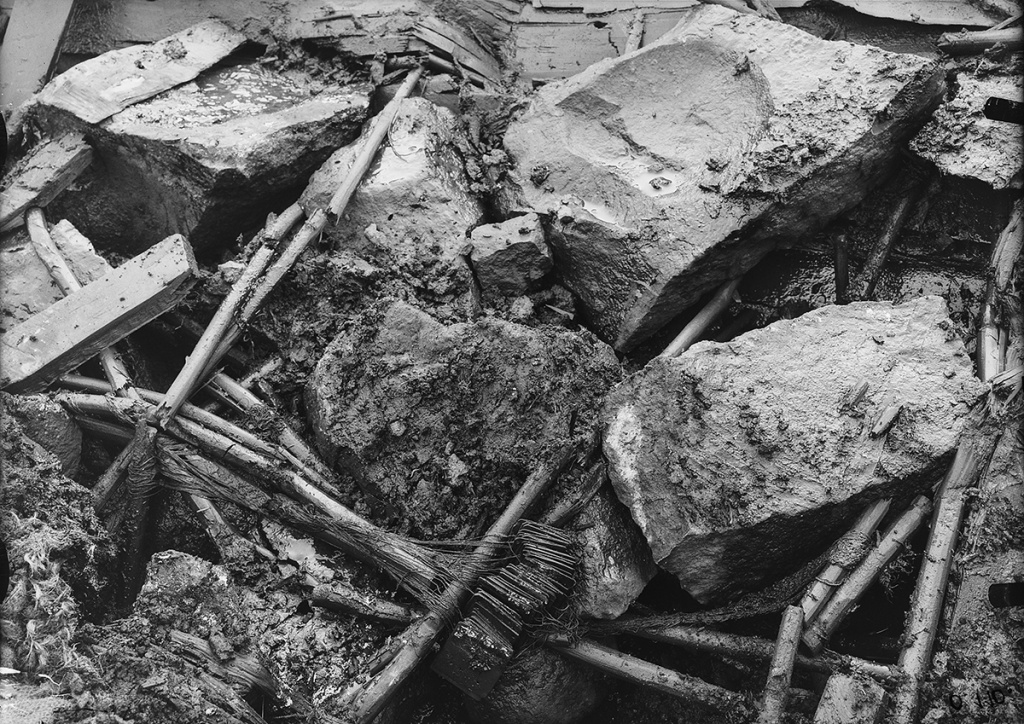
A good example of his understanding of the find’s uniqueness is that, in August 1904, he drew how the tablets were threaded before they were lifted from the excavation site. Each tablet is documented in a drawing that shows the number of threads in the tablet, which hole they were threaded through, and from which side (figure 5).
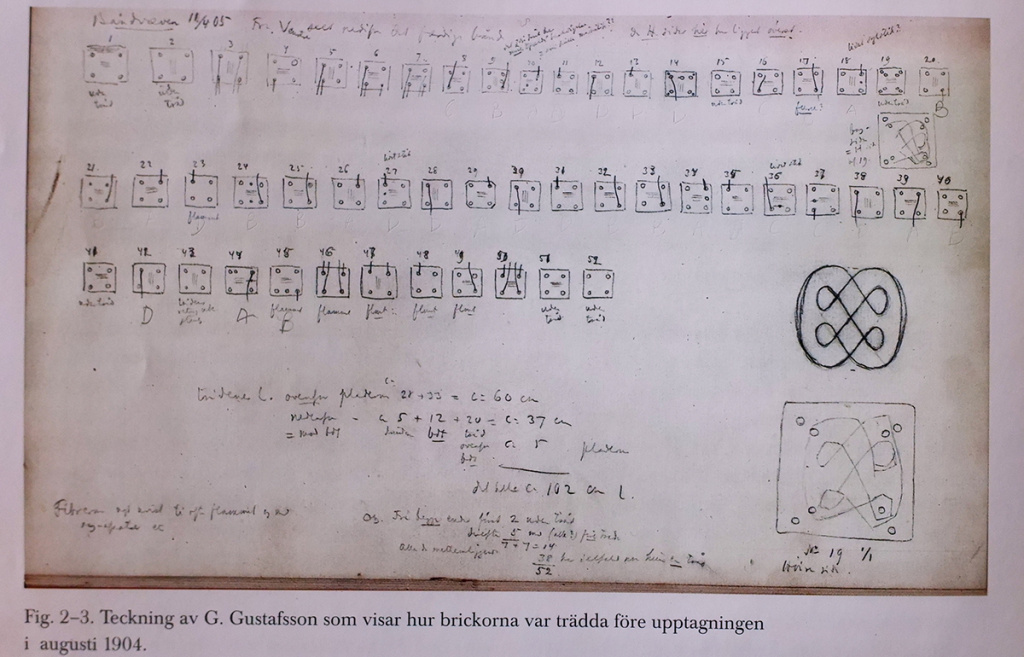
With great humility and reverence, 118 years later, I was able to study both the partially finished band and a similar band mounted in one of the tapestry fragments. After an in-depth study of the drawing, the partially finished band, and the band in tapestry fragment 13B2 “Shield Wall,” I ended up with the reconstruction in figure 6 (Skogsaas 2022).

What Were the Tablet-Woven Bands Used For?
Tablet-woven bands on clothing were primarily decorative, but owning garments with tablet-woven bands at that time also indicated that you belonged to a higher social class. The bands in figures 1, 2, and 3 were found on garments, but none of the bands from Oseberg were found mounted on clothing. This does not mean they weren’t, but we have no proof. Very, very few bands from the Viking Age have been found on clothing in Scandinavia in general. About half of the Oseberg bands are mounted into tapestry fragments. The band in figure 6 was mounted at the bottom of the tapestry fragment known as the “Shield Wall” (figure 7).
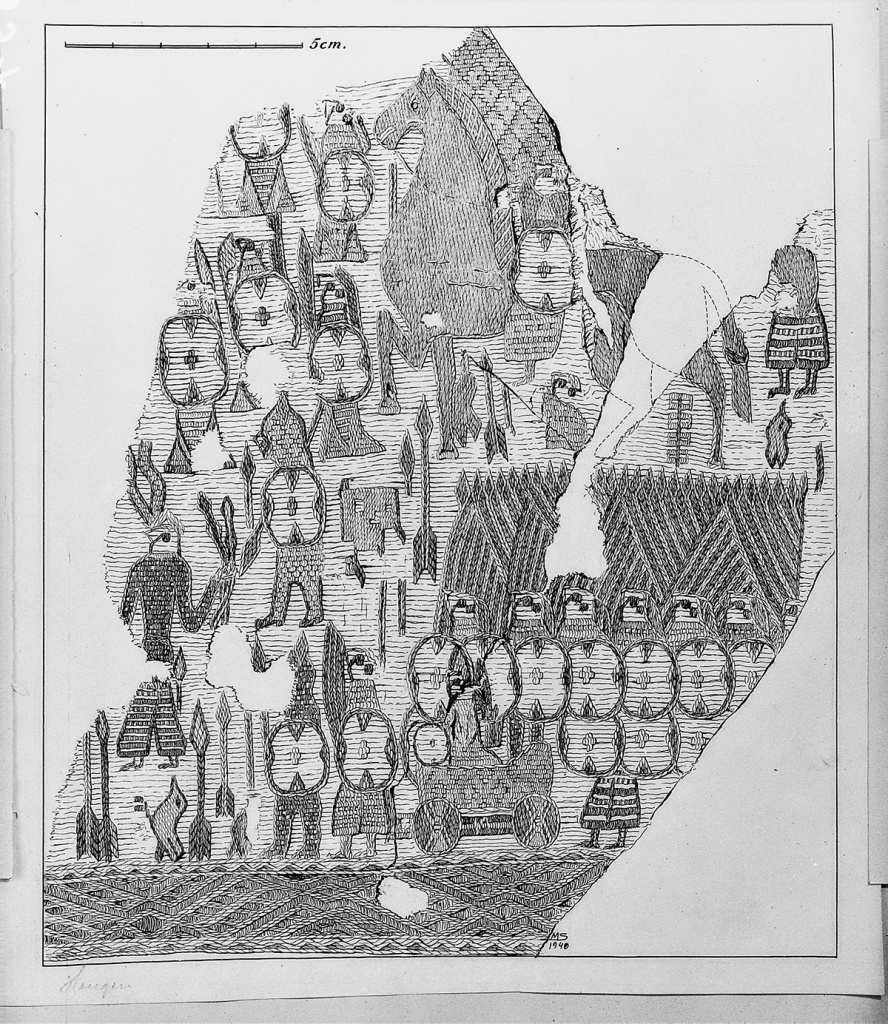
The Techniques
Like all other forms of woven textiles, tablet weaving is done with warp and weft. In tablet weaving, two, three, or four warp threads are threaded through holes in a tablet, as in figure 8. The width of the band depends on the number of tablets. The bands from Oseberg vary in width from 0.5 cm to 5–6 cm. A simple band can be made by turning the tablets either forward or backward with a weft thread between each turn. However, with tablet weaving, the possibilities are almost endless depending on color choices, how the tablets are threaded, how the tablets are turned, and how the weft is inserted. You can find more information about the advanced weaving techniques from the Oseberg find on [my Facebook page](https://www.facebook.com/bente.skogsaas).
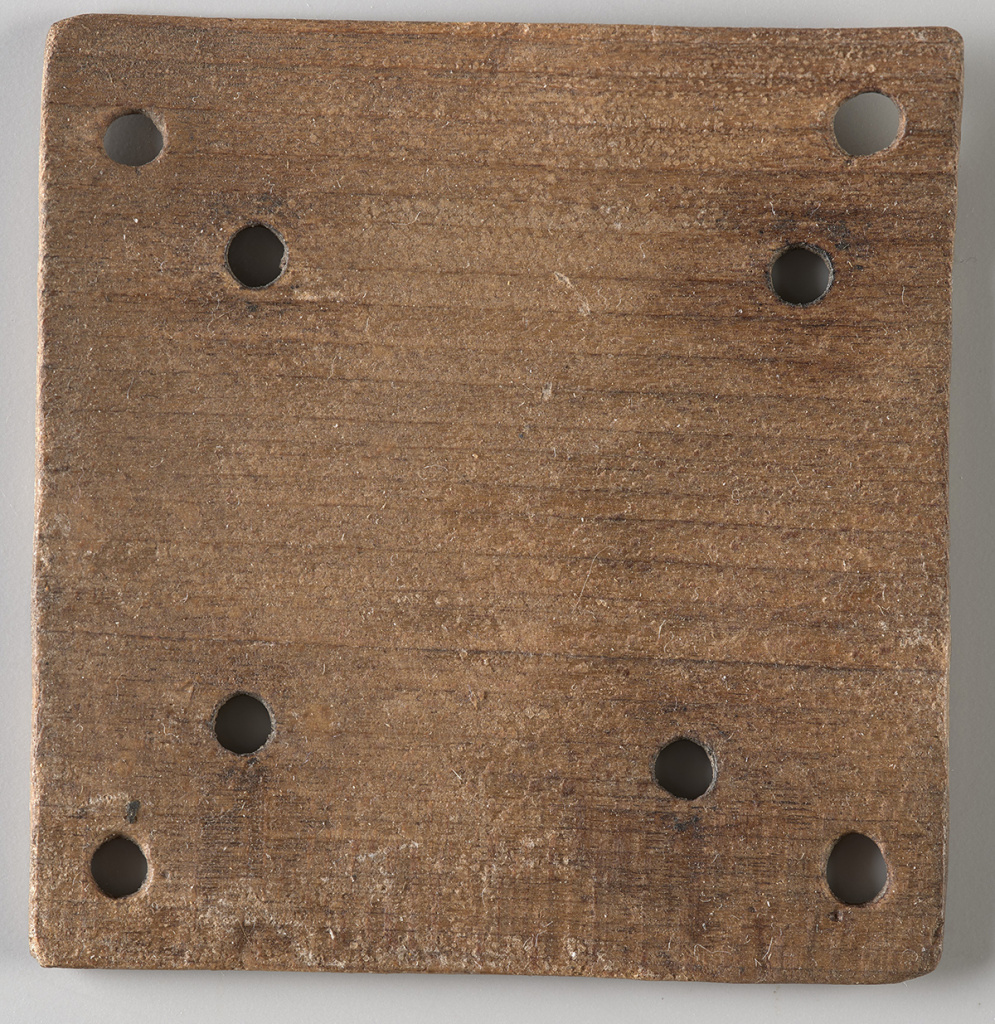
The Motifs and Yarn
What makes the find so unique is the great variation of techniques, combined with the diversity of patterns and the use of extremely fine yarn made from wool, plant material, and silk. The wool yarn in my reconstructions is spun from wool from the Old Norwegian sheep breed, which has genetic ties to sheep from the Viking Age. The silk thread is most likely something the Vikings brought back from many of their journeys in the southeastern parts of Europe (Vedeler 2014). The wool yarn is extremely fine: It varies between 20/2 (950m/100g) and 28/2 (1400m/100g). The red colors are the most visible today, but there were also yellowish, grayish, and brownish shades in various nuances. Blue and green colors are not clearly present today. In my reconstructions, I have used a broader color spectrum than what we can prove, as no chemical analyses have been conducted. It has been interesting to discover during the reconstruction work how the weavers’ sense of aesthetics also involved weaving bands with yarns of different thicknesses and degrees of twist.
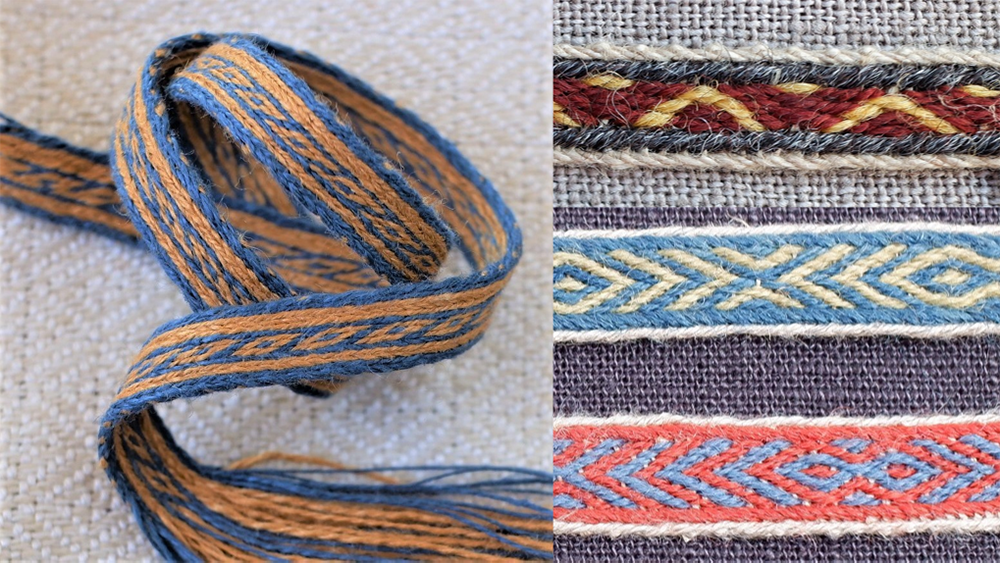
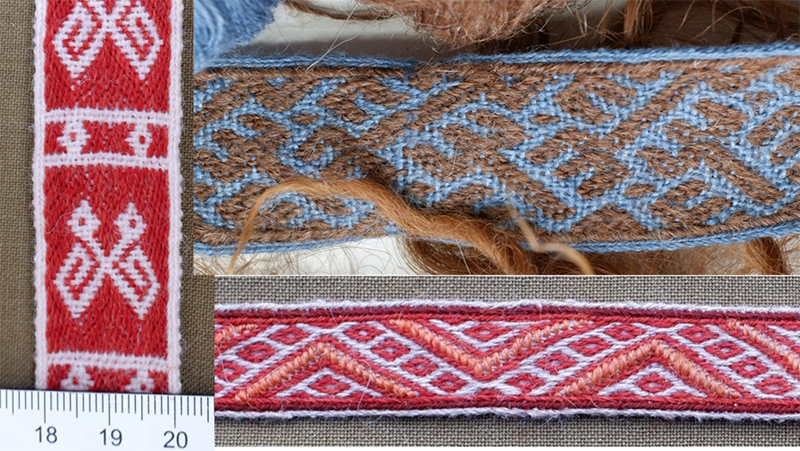
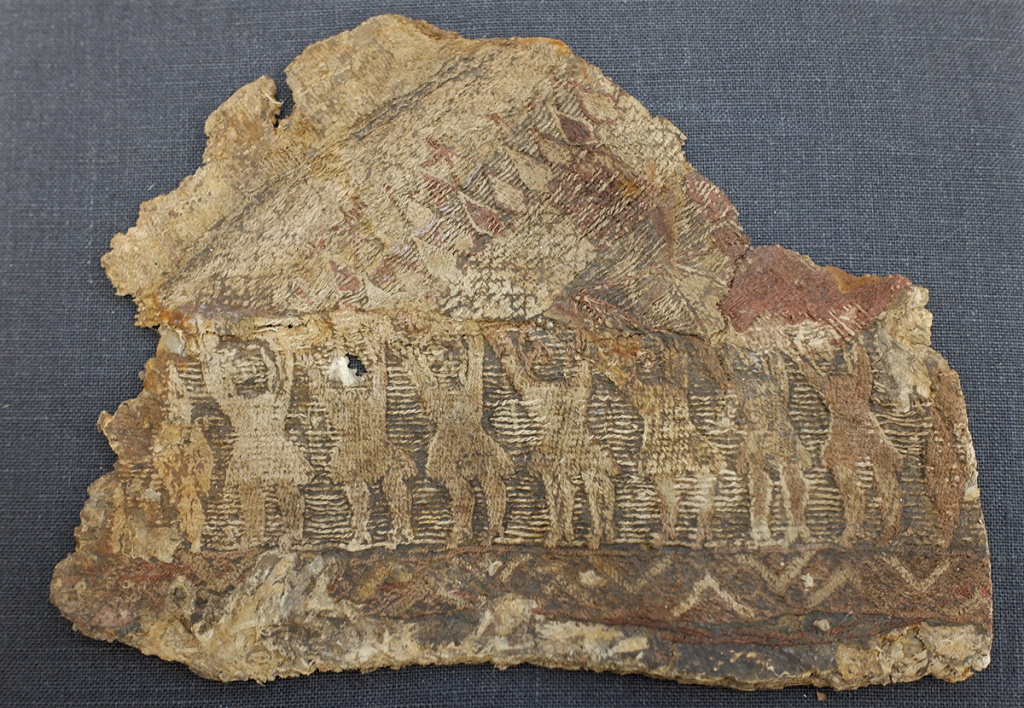
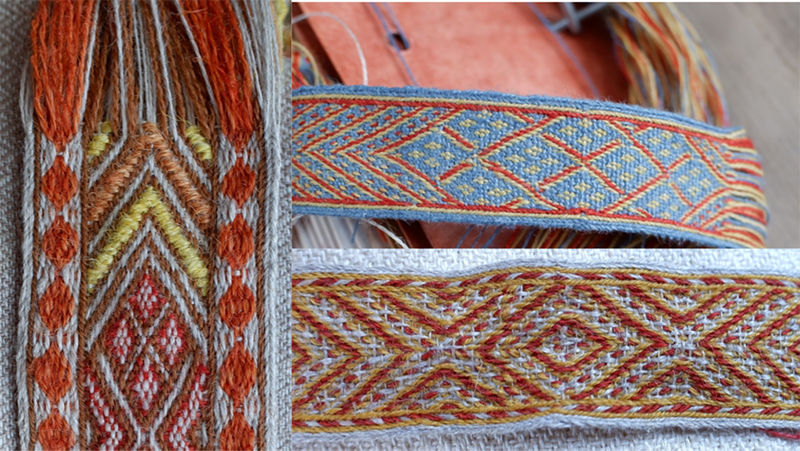
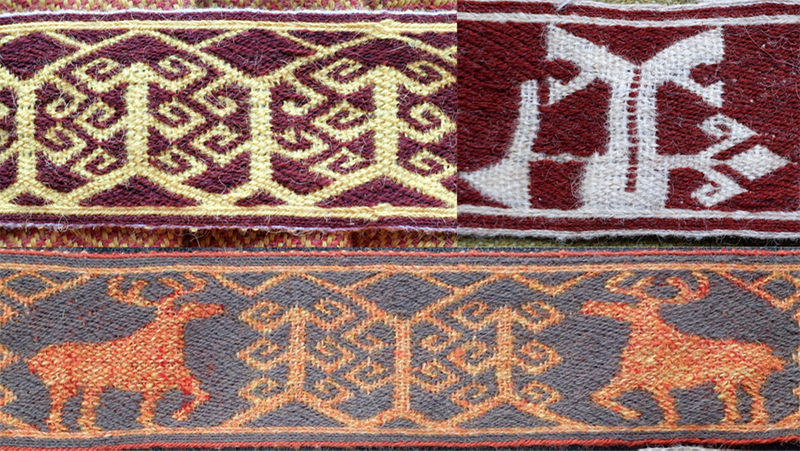
Figure 14: Oseberg 34D is like a poem with eight verses and ten refrains. It is woven with plant material in the background and the motifs in wool and silk.
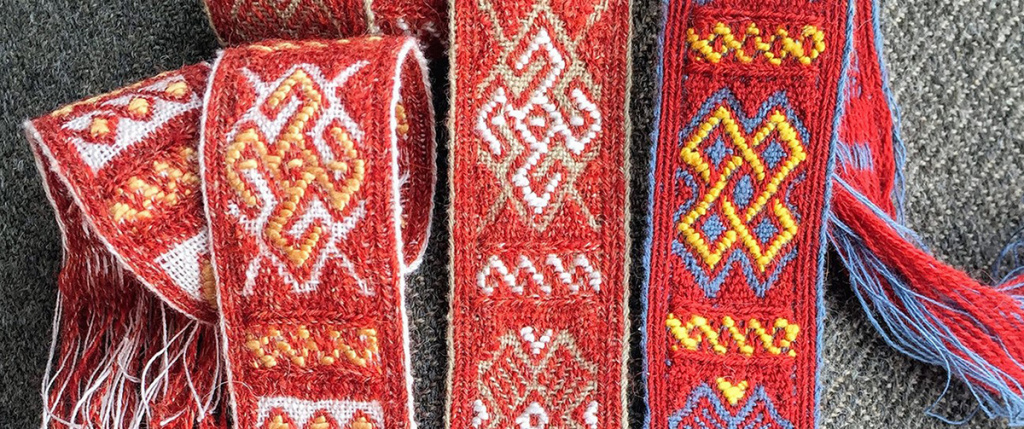
References
– Nockert, Margareta, and Arne Emil Christensen: *The Oseberg Find. Volume IV.* Cultural History Museum, University of Oslo (2006).
– Skogsaas, Bente: *Oseberg 34D. Reconstruction and How to Weave Step by Step.* Oslo: Kolofon Forlag (2019).
– Skogsaas, Bente: *Oseberg 9 Tablet-Woven Bands. Reconstruction and How to Weave Step by Step.* Oslo: Kolofon Forlag (2020).
– Skogsaas, Bente: *A Tablet Woven Band from the Oseberg Grave: Interpretation of Motif and Technique.* EXARC Journal (2022/3).
– Vedeler, Marianne: *Silk for the Vikings.* Ancient Textiles Series, Oxbow Books (2014).
From Passion to Master’s Degree
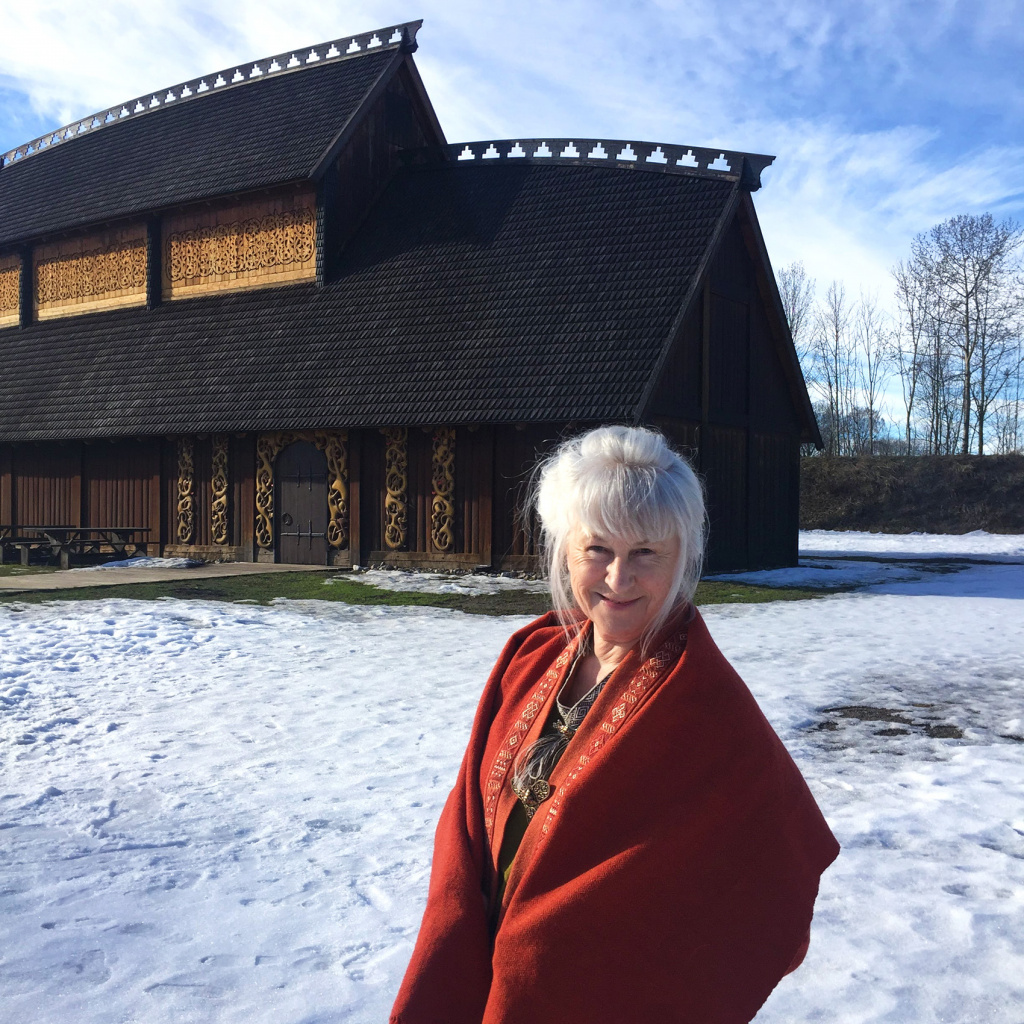
Ten years ago, I saw a watercolor by Sofie Krafft (illustrator for the Oseberg find in the early 1900s): a watercolor of an exceptionally beautiful tablet-woven band called ‘Oseberg 34D’. As a relatively new tablet-weaver, I fell head over heels and never recovered. A few years later, this passion for tablet weaving and the Oseberg bands resulted in a master’s degree in traditional art with a reconstruction of Oseberg 34D (2019), Book I on 34D (2020), Book II with nine reconstructions from Oseberg (2022), and the publication of a scientific article (EXARC 2022). The next book, Book III, will be the final volume on the bands and will be ready in 2025: A compilation of 18 reconstructed bands from the ship burial.

